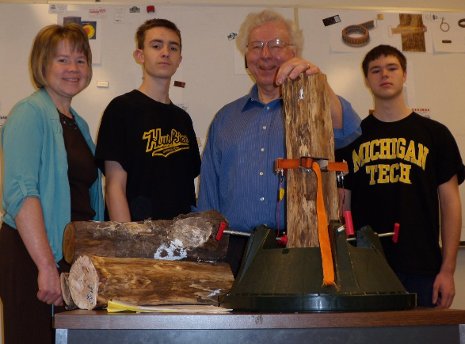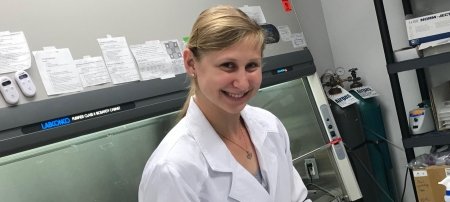Of Dollars and Scents: Tracking the Elusive Sandalwood Oil

Roger Turpening has made a career of searching for hidden things of great value, many of them deep underground and traded on commodities exchanges. Now he is applying his seismic imaging skills in pursuit of another kind of oil, one that grows in trees.
If you’ve ever been transported by a breath of L’Air du Temps or Chanel °5, then you know something of the sandalwood tree. The oil found in its heartwood forms a base note in some of the world’s great perfumes, and, at about a thousand dollars a pound, it’s one reason why they are so dear.
It takes 12 to 15 years or longer to grow a sandalwood tree that contains an appreciable amount of oil, which is concentrated in the wood in the center of its trunk and in its roots.
To view a tree’s interior during this growing period, foresters sometimes remove a tiny core of wood, which takes 15 minutes, and send it to the company’s lab, which takes a week. Unfortunately, the hole they make forms a portal through which insects and disease can enter. Moreover, since the heartwood is at times not located precisely along the axis of the tree, the forester can miss the valuable wood. Because of these difficulties, very few trees are sampled.
To collect the oil, loggers first yank the tree out of the dirt, roots and all. Sometimes they find oil. Sometimes they don’t, and all they are left with for years of effort nurturing a potentially precious tree is a few bundles of incense sticks—and a profound regret at not waiting another year or two.
This is where Turpening, a geophysicist at Michigan Technological University, comes in. Using seismic technology like that he developed to find the structures that harbor oil thousands of feet beneath the surface of the Earth, he has crafted a tree imaging system that can detect the oily heartwood a few inches inside a tree.
The system sends sound waves through the trunk that respond to the heartwood. Computer programs then generate multicolored digital printouts showing cross-sections of the tree; heartwood appears as a deep red disc in the center. Wood without oil, the sapwood, shows up as green or yellow.
The system could result in huge savings to sandalwood growers. It also has potential in the more mundane but potentially lucrative lumber industry. “We’ve been asked to think about its use on saw logs just before they go up to the saw,” says Turpening. If it could detect knots or other flaws, the cuts could be adjusted to maximize the value of the log. “And if veneer has any knots at all, they can ruin a sheet,” he says. “If you knew there was a problem with a log, you might not even buy it.”
The Freshman Connection
Until a month ago, their system had one minor drawback: it took 16 minutes to generate an image. That wouldn’t be excessive for someone deciding whether or not to harvest a $3,000 sandalwood tree. But in a sawmill, 16 minutes is eternal.
Fortunately, Neil Hutzler, former associate dean of engineering, had asked Turpening to present his research before a group of undergraduates in the Research Scholars Program. The College of Engineering sponsors the program, which links faculty with students interested in research.
Without great expectations, Turpening talked to the group and mentioned the time problem. This caught the attention of a first-year chemical engineering student lounging in the back of the room, Mackenzie Roeser, of Huntley, Ill., and his friend, Scott VanderLugt, of Kalamazoo, a computer science major.
“Roger did his presentation, and we thought it was cool,” said Roeser. When they heard how long it was taking to generate the images, they thought they might have a solution.
“They took off with it,” said research scientist Carol Asiala, a member of Turpening’s team. “They took our code, written in MatLab, rewrote it in Java, changing a critical subroutine along the way. Then they came back to us with it, and it was great.”
“Their contribution is just astounding,” says Turpening. “What used to take 16 minutes now takes 11 seconds.” At the end of the day, Roeser and VanderLugt had slashed the time it took to generate an image by over 98 percent.
Both students are in the University’s Honors Institute, and Roeser is in the Research Scholars program. They receive credit toward their honors contract through their work, but mainly, they say, they work with Turpening “because it’s fun.”
Now the group aims to refine their technology to make it easier to use and to provide higher resolution images of the oily heartwood that could be used in stripping away the sapwood.
Their work was made possible in part by a Michigan Universities Commercialization Initiative grant.
Michigan Technological University is an R1 public research university founded in 1885 in Houghton, and is home to nearly 7,500 students from more than 60 countries around the world. Consistently ranked among the best universities in the country for return on investment, Michigan's flagship technological university offers more than 185 undergraduate and graduate degree programs in science and technology, engineering, computing, forestry, business, health professions, humanities, mathematics, social sciences, and the arts. The rural campus is situated just miles from Lake Superior in Michigan's Upper Peninsula, offering year-round opportunities for outdoor adventure.




Comments